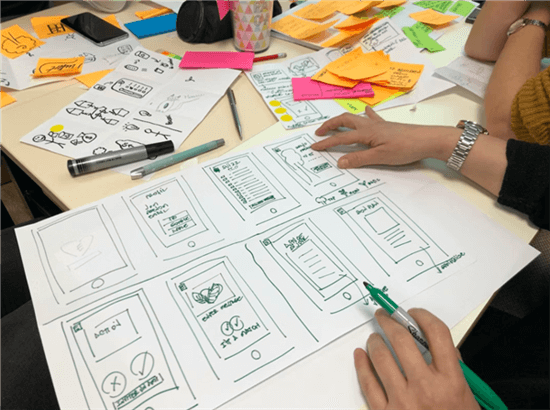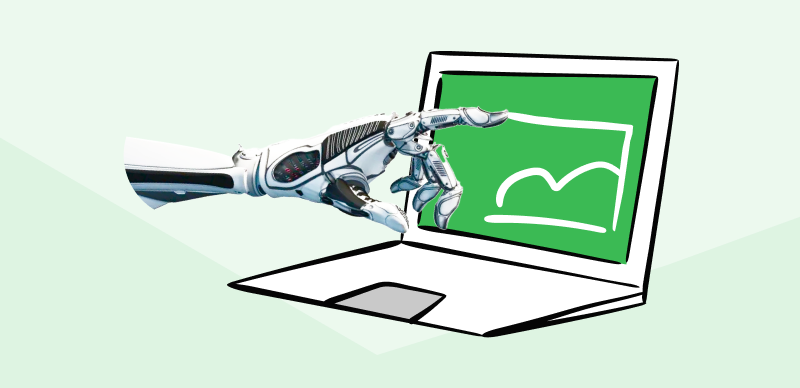Design Thinking Workshop: Everything You Need to Know
In modern business, the focus is less on designing products are more on designing experiences. For this to be possible, those who propose ideas and develop functionalities have to think about all aspects of the product use, including aesthetic and practical concerns. Since this is not a natural way of thinking for many technically-minded workers, it may be necessary to organize training sessions where they can be exposed to innovative methodologies that prioritize user satisfaction.
One way to train the employees to be more innovative and user-centric are to put them through a Design Thinking workshop. This training technique is relatively simple to implement, and it can have a lasting impact on the entire team. If successful, it typically results in better collaboration across the organization, a more empirically-minded approach to product development and testing, and an increased level of productivity in the execution phase.
Since Design Thinking is not yet universally well understood among business owners and top managers, we’ll try to answer the most important questions about this business philosophy.
Also read: What You Need To Know About Animation Design? >
What is a Design Thinking Workshop?
A Design Thinking workshop is a training session focused on instilling a sense of empathy with the customers and full awareness of the product’s roles in their lives. This session can last anywhere between a day and a week and can be organized in person or through an electronic platform. The training should be conducted by an experienced manager who is familiar with the Design Thinking methodology, and it should include all members of the team regardless of their experience level or primary area of competence.

What is a Design Thinking Workshop
The emphasis of the workshop needs to be on solving practical problems. The principles of Design Thinking are applicable to many situations and can be demonstrated while using accessible design examples from daily work. The employees can be asked to imagine different scenarios and propose possible solutions to potential problems, while workshop leaders should nudge them towards more sustainable options. This simple exercise can put workers in a different headspace and allow them to act more assertively on real projects.
Why Run a Design Thinking Workshop?
Business philosophies must constantly evolve in order to stay in lockstep with expectations of the customers. In this era, the principles of good design are broadly appreciated, and clients want products and services that are tailored exactly to their needs. This puts older organizations that were built on a process-based foundation at a disadvantage, unless they embrace new techniques such as Design Thinking and adjust their operations accordingly.
Here are some situations in which a company might need to hold a Design Thinking workshop:
- The new business model is being introduced
- New products or services are being developed
- The company is experiencing a persistent lack of creativity
- A wave of hiring is underway
- The management change is being considered
- Users are complaining about a product or service
- Competitors are putting pressure on the bottom line
How to Run a Design Thinking Workshop?
It’s very important to organize the workshop properly and ensure that the main elements of this business approach are adequately presented. The workshop needs to be thoroughly prepared, with the right location chosen and all the necessary materials created and distributed in advance. Once all the conditions are in place, the organizers can start thinking about the most impactful activities for accomplishing the main objectives.

How to Run a Design Thinking Workshop
Here are some crucial elements to include in the plan for a Design Thinking workshop that will allow for a natural learning experience and hopefully result in new ideas for solving long-standing issues:
Step 1. Introduction & Icebreaker
The first part of the workshop should be focused on getting everyone comfortable and actively engaged. A simple ice-breaker can help a great deal in this regard. This segment shouldn’t take more than 30 minutes in total.
Step 2. Understanding user perspectives
The next objective is to elicit empathy with the users, typically through presenting selected facts from research, drawing empathy maps, and debating how user experience could be improved. Activities from this group could take 1-2 hours.
Step 3. Problem-solving exercise with real-life example
In this segment, the participants are asked to apply some of the insights from previous stage to solve a problem that was identified in practice. Original ideas and solutions are expected, and can be presented in multiple iterations, taking several hours or even multiple days.
Step 4. Defining a perfect user journey
Participants should work together to resolve the main pain points and draft a journey that results in customer satisfaction. Individual steps of the journey can be discussed in short sessions (15-30 minutes) to decide how best to proceed.
Step 5. Building and testing a prototype
This segment may not be necessary for all organizations, but it makes sense in product development and software engineering, and perhaps a few other fields. It can be very helpful to create a workable version of the product or application that can be thoroughly tested and evaluated.
Step 6. Feedback and follow up
To achieve lasting benefits from a Design Thinking workshop, it’s necessary to collect feedback from the participants and motivate them to apply the lessons learned to their daily work. The solutions proposed during the workshop need to be put in practice without losing sight of the user’s expectations.
Frequently Asked Questions about Design Thinking Workshops
In which industries can Design Thinking workshops be useful?
This technique was proven to be successful in software development, manufacturing, online services, and many other industries. Since the focus of Design Thinking is on improved user experience and creative problem solving, its benefits are nearly universal.
How many people can participate in a Design Thinking workshop?
The upper limit of participants in a Design Thinking workshop is determined based on practical concerns, such as the capacity of the venue or physical proximity to the location. It’s common for entire teams (and sometimes multiple teams) to attend such workshops and work together on important challenges.
Is it expensive to organize a Design Thinking workshop?
No, this training technique requires only minimal expenses for training materials, conference room, some refreshments, and perhaps an external trainer. As such, it’s considerably more affordable than team building activities that include travel. In a Design Thinking workshop is organized online, it’s practically free of charge.
Final Words
Adopting new approaches should be an integral part of a business mentality, and organizations that want to remain competitive must continuously educate their workers. Design Thinking is a paradigm that can be readily applied to countless situations, and it consistently brings similar benefits regardless of the team size or specialization.
A workshop dedicated to this technique is a good way to get started, but it should be only the beginning of a long-term program that aims to put the user in the center of the product development process.



